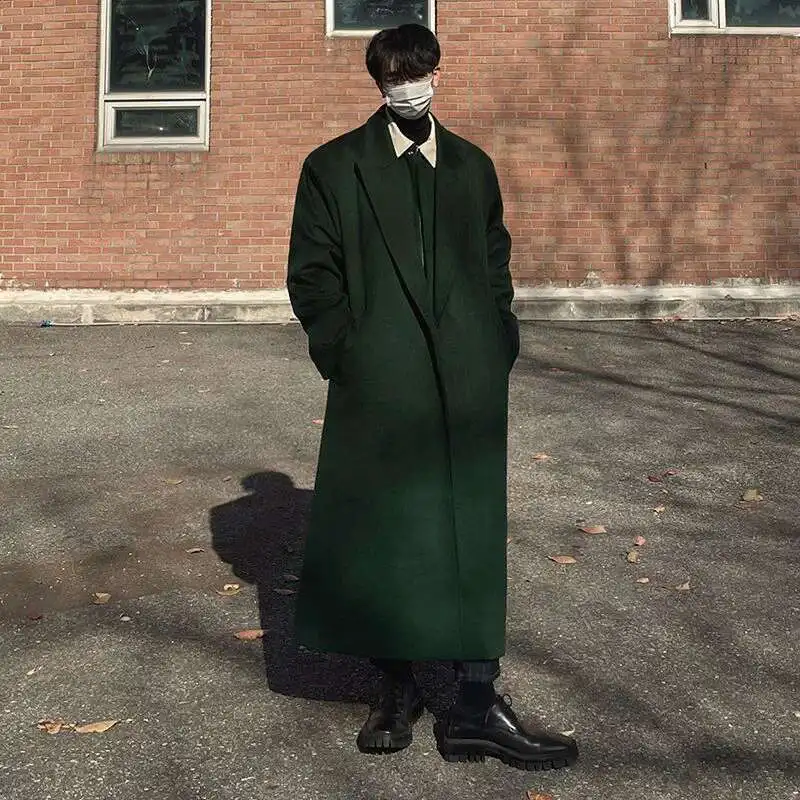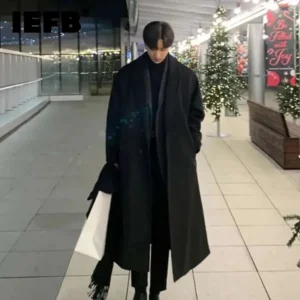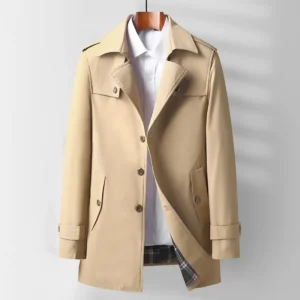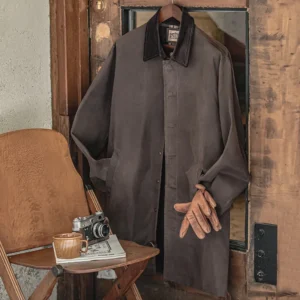Understanding Men’s Formal Outerwear
The world of men’s formal outerwear represents the perfect blend of function and sophistication. A dress coat isn’t simply any coat worn over formal attire—it’s a carefully designed garment that complements and enhances formal wear while providing necessary warmth and protection. Unlike everyday overcoats that prioritize casual comfort, formal outerwear adheres to specific design principles that honor centuries of tailoring tradition.
What truly sets formal outerwear apart is its ability to complete a sophisticated look rather than simply covering it. The right dress coat doesn’t merely protect your tuxedo or suit—it extends and enhances your entire formal presentation. This distinction matters because formal events often begin and end with your coat as the first and last impression you make.
Formal outerwear exists on a spectrum, ranging from the ultra-formal opera cloaks designed for white-tie affairs to more versatile Chesterfield coats suitable for a range of formal occasions. This formality gradient has evolved from 19th-century traditions when a gentleman’s outerwear precisely signaled his social standing and the nature of his engagement. Today’s formal dress coat options maintain many of these classical elements while adapting to contemporary needs.
Understanding this rich heritage helps the modern gentleman appreciate why certain design elements—from fabric choices to lapel styles—remain essential components of formal outerwear. When selected thoughtfully, the right dress coat doesn’t just keep you warm; it announces your arrival with quiet authority and completes your formal ensemble with elegant precision.
Classic Formal Overcoats for Black Tie & White Tie Events
The cornerstone of formal outerwear remains the classic overcoat, with the Chesterfield coat standing as perhaps the most versatile and respected option for formal occasions. Distinguished by its clean lines, single-breasted or double-breasted closures, and often a velvet collar, the Chesterfield provides a refined silhouette that complements rather than overwhelms formal attire beneath.
The Chesterfield Coat
The quintessential Chesterfield features a knee-length cut, structured shoulders without padding excess, and a clean back without vents or belts. The traditional velvet collar—typically in black regardless of the coat’s main color—adds a touch of luxury while nodding to its aristocratic heritage. For the most formal settings, a black overcoat represents the gold standard, though charcoal and navy also maintain appropriate formality while offering slightly more versatility.
Single vs. Double-Breasted Styles
When selecting between single and double-breasted variations, consider both your body type and the formality level:
- Single-breasted Chesterfields: Offering a cleaner, more minimalist look that works particularly well for slimmer frames and slightly less formal black-tie events.
- Double-breasted Chesterfields: Providing additional warmth and a more commanding presence, these coats create a stately silhouette ideal for the most formal occasions.
Material Considerations
Fabric quality significantly impacts both the appearance and functionality of formal overcoats. Premium wool (18-24 oz weight) provides the ideal drape and warmth for winter formal events. Cashmere blends offer luxurious softness and lighter weight but come at a premium price point. The heavier fabric weight ensures the coat maintains its structured shape while accommodating tailcoats or dinner jackets underneath without unsightly bunching.
When considering appropriate coat length for your height, formal overcoats should typically reach just below the knee. This length ensures complete coverage of the formal wear beneath while maintaining proper proportion and ease of movement.
The Tailcoat: White Tie’s Essential Garment
The tailcoat—also called an evening dress coat or simply “tails”—represents the pinnacle of formal menswear. Unlike other formal coats that serve as outerwear, the tailcoat is actually part of the formal ensemble itself, specifically designed for white-tie events, the most formal dress code in Western tradition.
Distinguished by its unique silhouette, the tailcoat features:
- A severely cutaway front that ends at the waist
- Two long “tails” extending down the back to the knees
- A black barathea wool construction with silk-faced lapels
- A single- or double-breasted front that is never buttoned
The perfect tailcoat fit is critical and leaves no room for error. The waist must sit precisely at your natural waistline—not below it—and the tails should hang straight to the back of the knee without flaring outward. The front cutaway should create clean lines without pulling or gapping when standing naturally.
White tie occasions requiring tailcoats include state dinners, certain diplomatic functions, royal events, and the most formal society balls. The tailcoat must be paired with specific accompanying elements:
- White marcella waistcoat
- White marcella bow tie
- Starched wing collar shirt with exposed studs
- Black formal trousers with twin silk braids
- Patent leather pumps with silk bows
Understanding proper coat length becomes especially important with tailcoats, as the proportions are strictly codified rather than subject to fashion trends. The front should precisely hit the waistline while the tails extend to the bend of the knee—no shorter, no longer.
Dinner Jackets & Tuxedo Styling for Black Tie Events
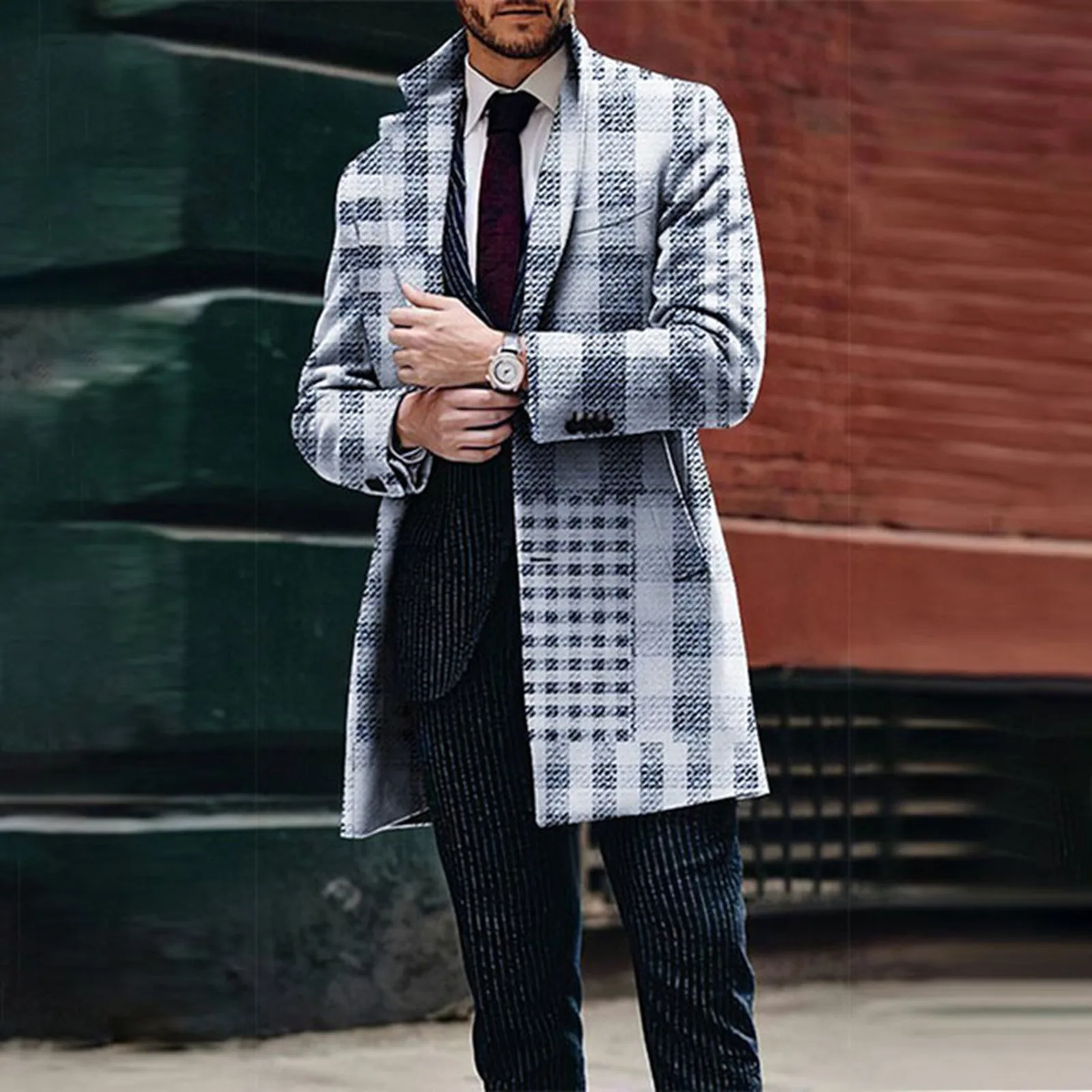
The dinner jacket (American: tuxedo jacket) forms the foundation of black tie attire, striking a balance between formality and comfort that has made it the standard for evening formal events for over a century. Unlike the tailcoat, the dinner jacket serves as part of the ensemble rather than outerwear.
Lapel Variations
The lapel style significantly impacts the jacket’s formality and character:
- Peak Lapels: The most traditional and formal option, with points that “peak” upward toward the shoulders
- Shawl Collar: A continuous curved lapel without notches, offering a softer, slightly less formal aesthetic often associated with Old Hollywood glamour
- Notch Lapels: Though increasingly common, these remain technically less formal than the other options and better suited to “black tie optional” events
Color Considerations
While black remains the standard, midnight blue has historical precedent as an elegant alternative—and actually appears richer than black under artificial lighting. For summer events or tropical locations, ivory or white dinner jackets paired with black trousers offer appropriate seasonal adaptation.
Styling Elements
Traditional dinner jackets feature:
– Single button closure (or two-button for double-breasted)
– No vents or side vents (center vents are less formal)
– Satin or grosgrain facing on lapels
– Matching satin stripe on trouser outseams
The double-breasted formal coat variation provides a more substantial appearance with a 6×2 button configuration (six buttons with only two functioning). This style projects confidence and classical elegance, though it remains slightly less common than its single-breasted counterpart.
Proper fabric weight (typically 10-12 oz wool barathea or wool/mohair blend) ensures the jacket drapes cleanly without wrinkling. The jacket should cover the seat entirely and feature sleeves that reveal approximately ¼-inch of shirt cuff when arms are relaxed at the sides.
The Morning Coat: Daytime Formal Excellence
The morning coat (or cutaway coat) stands as the daytime equivalent of the evening tailcoat in formal hierarchy. Characterized by its single-breasted front with one button and a distinctive cutaway that curves gradually from the front button to the tails, this coat creates an elegant silhouette for the most formal daytime occasions.
Traditional morning coats come in either black or oxford gray, with black being the most formal option. The coat is constructed from worsted wool with a subtle herringbone pattern or solid finish and features:
- A single button closure at the waist
- A sharp cutaway front that extends to tails in the back
- No vent in the back for the cleanest lines
- Plain or peaked lapels (the latter being more formal)
- A length that extends to just behind the knee
Proper fit is paramount—the morning coat should hug the torso without constriction and feature high armholes for ease of movement. The shoulders must lie flat without divots or rippling, and the collar should sit snugly against the neck without gapping.
Morning dress remains appropriate for:
– Formal daytime weddings
– Royal Ascot and similar prestigious racing events
– Certain diplomatic functions before 6 PM
– Formal garden parties with royal attendance
The complete morning dress ensemble includes:
– Morning coat in black or oxford gray
– Striped formal trousers (black and gray)
– Single or double-breasted waistcoat (gray, buff, or powder blue)
– White shirt with turndown collar
– Necktie or Ascot in silver or subtle pattern
For gentlemen of shorter stature, proper consideration of coat length options for short men becomes crucial, as the dramatic lines of the morning coat can either enhance or overwhelm your proportions when improperly fitted. A well-chosen grey overcoat can serve as appropriate outerwear when traveling to morning dress events.
Choosing the Right Formal Topcoat
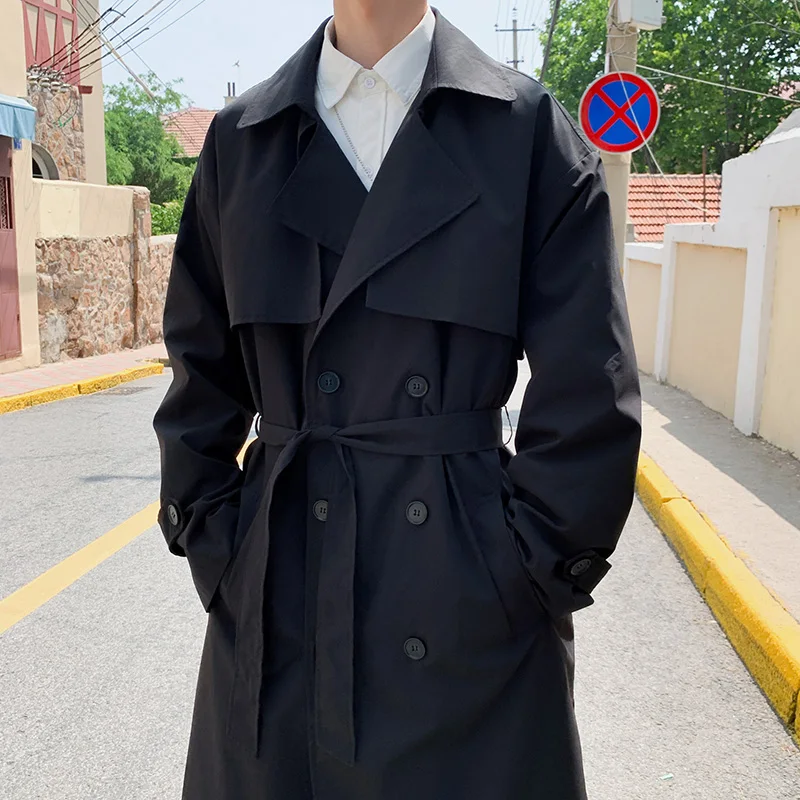
The topcoat represents a lighter-weight alternative to the classic overcoat, making it ideal for formal events in transitional seasons or milder winter climates. Distinguished primarily by its weight and length, a formal topcoat typically features a lighter fabric (13-16 oz) compared to overcoats (18-24 oz) and a slightly shorter cut that falls just below the knee.
For formal occasions, certain elements elevate a topcoat to appropriate elegance:
- Clean, structured lines without extraneous details
- Either single-breasted (3-button) or double-breasted (6×2) closures
- Refined fabrics like wool, cashmere, or quality blends
- Subtle patterns (herringbone, twill) or solid colors
- Proper sleeve length allowing ¼-inch of suit sleeve to show
The color palette for formal topcoats remains conservative: black offers maximum versatility for evening events, while charcoal and navy provide subtle alternatives that maintain appropriate formality. The fabric should feature a fine finish that catches light elegantly rather than appearing flat or casual.
Proper sizing accommodates formal wear underneath without looking oversized. The shoulders should extend just slightly beyond your suit jacket’s shoulders, and the chest should allow comfortable closure over your dinner jacket without strain. When selecting from available topcoat options, ensure the coat hangs cleanly without rumpling the formal wear beneath.
Understanding the appropriate coat length for winter helps maintain both warmth and proportion. For formal occasions, the topcoat should cover your entire suit or tuxedo jacket while ending between mid-knee and just below the knee—never above the suit jacket hem, which would create an unbalanced silhouette.
Paletot & Formal Frock Coats: Distinguished Alternatives
The Paletot coat represents one of formal wear’s most distinguished yet lesser-known outerwear options. Characterized by its shaped silhouette and clean, architectural lines, the Paletot offers a slightly more styled alternative to the classic Chesterfield while maintaining appropriate formality for black tie events.
This elegant coat features:
– A slightly suppressed waist creating a more defined silhouette
– Often double-breasted with a 6×2 button stance
– No center back vent for the cleanest lines
– A straight collar rather than a velvet one (distinguishing it from the Chesterfield)
– Set-in sleeves with clean shoulders
– Length falling just below the knee
The Paletot’s structured elegance makes it particularly flattering for gentlemen with an athletic build, as it accentuates the chest and shoulders while defining the waist. Traditional Paletots come in black, charcoal, or navy fine wool, though luxury cashmere options offer exceptional softness and drape for those seeking the ultimate in refined outerwear.
The formal frock coat—distinct from the morning coat—has largely vanished from contemporary wardrobes but occasionally appears in historical formal wear or certain ceremonial contexts. Unlike the cutaway morning coat, the frock coat features a straight front cut that extends to knee length all around. Today, this style remains primarily the domain of historical reenactment or highly specialized formal traditions.
When selecting between these distinguished alternatives and more common formal coats, consider not just the occasion’s formality but also your physical proportions and personal aesthetic preferences. These less common options offer sophisticated distinction while maintaining formal propriety.
Opera Cloaks & Formal Capes: Traditional Evening Elegance
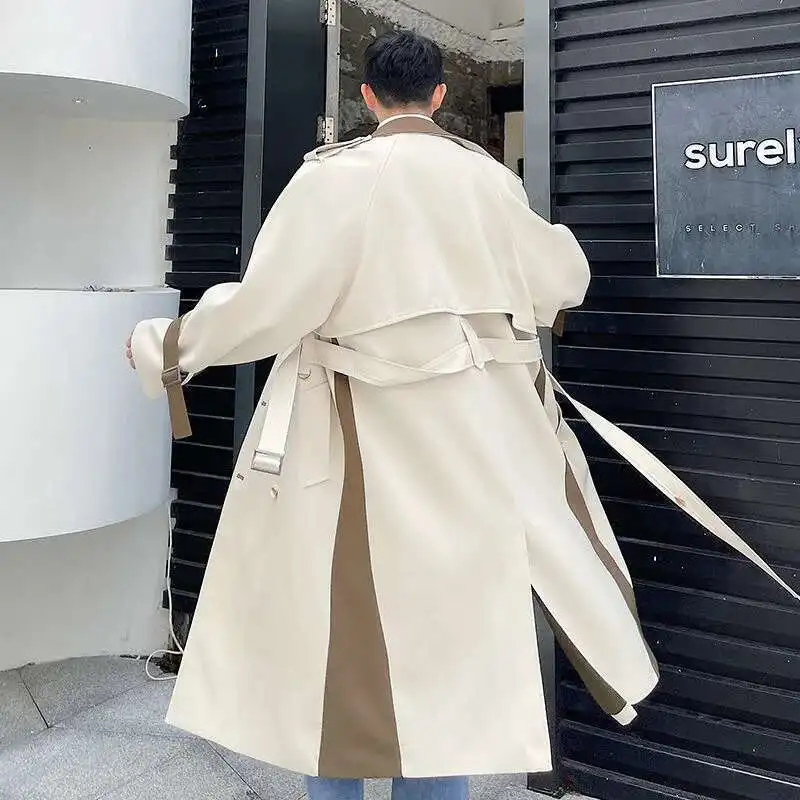
The opera cloak represents the most dramatic and historically significant formal outerwear option, designed specifically for white-tie occasions and formal evening events. Unlike structured coats, the opera cloak drapes elegantly over the shoulders, secured by a neck clasp or chain while remaining open at the front.
Traditional opera cloaks feature:
– Full-length design reaching the ankle
– Wool melton or cashmere exterior in black
– Luxurious silk or satin lining in black or deep burgundy
– A cape collar that can be turned up for additional drama
– Sometimes, a detachable shoulder cape for added visual interest
The formal cape—a close relative of the opera cloak—offers a slightly less voluminous alternative while maintaining similar elegance. Both garments originated in an era of horse-drawn carriages when protection from the elements without crushing formal attire was essential.
Today, these dramatic outerwear pieces remain appropriate for:
– Opening nights at the opera, ballet, or symphony
– White-tie galas and balls
– Certain state dinners and diplomatic functions
– Formal evening weddings with traditional dress codes
Contemporary designers occasionally reinterpret these classical garments with subtle modern touches while respecting their essential character. For gentlemen seeking distinctive formal outerwear that makes a statement, long coat options including opera cloaks offer unmatched theatrical elegance.
When considering such a dramatic piece, understanding the differences between short and long formal coats helps ensure appropriate selection. The opera cloak’s full length creates a commanding presence while requiring confident wearing—it makes a statement that should align with both the occasion’s formality and your personal comfort with traditional elegance.
Decoding Dress Codes: Matching Coats to Occasions
Navigating formal dress codes requires understanding not just the rules but the appropriate outerwear for each occasion. Here’s a comprehensive guide to matching your formal coat to specific dress codes:
White Tie
The most formal Western dress code demands equally formal outerwear:
– Primary Option: Black opera cloak with silk lining
– Traditional Alternative: Black Chesterfield overcoat
– Never Appropriate: Casual overcoats, patterned fabrics, or relaxed styles
– Complete Ensemble: White tie with tailcoat, white piqué waistcoat, patent leather shoes
Black Tie
The standard evening formal dress code offers slightly more flexibility:
– Ideal Options: Black or midnight blue Chesterfield coat; formal Paletot
– Acceptable Alternatives: Black or charcoal topcoat with clean lines
– Seasonal Variation: In summer, lighter weight topcoats in darker colors
– Complete Ensemble: Dinner jacket/tuxedo, formal trousers, patent or highly polished dress shoes
Black Tie Optional
This somewhat confusing intermediate dress code requires careful consideration:
– Best Choice: Dark Chesterfield or topcoat that works with either tuxedo or dark suit
– Acceptable Alternative: Navy or charcoal formal overcoat
– Complete Ensemble: Either dinner jacket or dark formal suit
Morning Dress
For formal daytime events, specific outerwear complements the morning coat:
– Traditional Choice: Dark gray or black topcoat
– Appropriate Addition: Gray or black top hat (carried, not worn indoors)
– Weather Option: Formal umbrella (solid black with wooden handle)
– Complete Ensemble: Morning coat, striped trousers, waistcoat, tie or ascot
Understanding double-breasted coat styling can provide additional options across these dress codes, as double-breasted formal overcoats offer both increased warmth and a commanding presence suitable for the most formal occasions. For gentlemen concerned with height perception, knowing which coat lengths create a taller appearance can inform thoughtful selection while maintaining dress code propriety.
Mastering Fit: The Foundation of Formal Outerwear

The elegance of formal outerwear depends fundamentally on proper fit. Even the most expensive coat will appear unkempt if poorly fitted, while a perfectly tailored coat of modest price presents a distinguished appearance. For formal occasions, these fit principles become even more critical.
Shoulder Alignment
- The coat’s shoulder seams should align precisely with your natural shoulder ends
- No rippling, divots, or overhang should appear across the shoulder line
- Shoulder expression should be clean and structured without excessive padding
- When arms hang naturally, the coat should drape cleanly without pulling
Sleeve Specifications
- Coat sleeves should reveal approximately ¼-inch of suit sleeve
- With suit showing ¼-inch of shirt cuff, proper cascading layers are achieved
- Sleeves should taper slightly toward the wrist without restricting movement
- Armholes should sit high enough to prevent fabric bunching when arms move
Length Considerations
- Formal overcoats should fall between mid-knee and just below the knee
- The coat must completely cover your suit jacket or dinner jacket by 3-4 inches
- For shorter gentlemen, coat length creates important proportion
- For taller men, slightly longer coats maintain balanced proportions
Body Drape and Silhouette
- The coat should close comfortably over formal wear without straining buttons
- Back should hang clean without horizontal pulling when standing naturally
- A slight suppression at the waist creates elegant shape without appearing tight
- Coat should move naturally with your body without restricting formal posture
Professional tailoring often makes the difference between adequate and exceptional formal outerwear. Minor alterations—adjusting sleeve length, suppressing the waist, or perfecting the collar fit—transform ready-made coats into personalized garments. For formal occasions where impressions matter, this attention to fit demonstrates sophistication and attention to detail.
Understanding the principles of full-length coat proportions helps ensure your formal outerwear enhances rather than detracts from your overall appearance. The investment in proper fitting pays dividends in both appearance and comfort throughout formal events.
Luxury Fabrics & Materials for Formal Outerwear
The quality and characteristics of materials used in formal outerwear significantly impact both appearance and performance. For truly distinguished formal coats, these premium fabrics stand above the rest:
Premium Wool Varieties
- Merino Wool: Offers exceptional fineness and soft hand while maintaining structure
- Lambswool: Provides natural insulation with slightly more texture
- Worsted Wool: Creates clean drape with subtle luster ideal for formal settings
Cashmere and Luxury Blends
- Pure Cashmere: Unmatched softness with natural insulation despite light weight
- Cashmere-Wool Blends: Combine luxury feel with improved durability and structure
- Vicuña: The rarest and most expensive fabric, reserved for the finest formal coats
Formal Coat Linings
- Silk: Traditional luxury lining offering smooth comfort and temperature regulation
- Satin: Creates elegant sheen and frictionless layer over formal wear
- Bemberg: Modern alternative with silk-like properties and improved durability
The appropriate fabric weight varies by coat style and intended season. Formal overcoats typically require 18-24 oz weight for proper drape and warmth, while topcoats fall into the 13-16 oz range. These heavier weights ensure the coat maintains its architectural shape without rumpling or collapsing.
Surface textures also influence formality. Smoother finishes like barathea or twill appear more formal than textured options. For the most formal occasions, wool overcoats with tight weaves and subtle luster represent the gold standard, providing warmth without unnecessary bulk under evening lights.
Proper care extends the life of these luxury materials. Most formal coats benefit from limited cleaning—typically once per season—using reputable dry cleaners experienced with fine fabrics. Between cleanings, spot treatment, gentle brushing, and proper hanging maintain appearance without stressing delicate fibers.
Color Theory for Formal Outerwear
Color selection for formal outerwear follows principles balancing tradition, practicality, and occasional seasonal variation. Understanding the symbolic language of color helps ensure your formal coat communicates appropriate respect for the occasion.
Traditional Formal Palette
- Black: Maximum formality and versatility across all evening formal events
- Midnight Blue: Traditional alternative that appears richer than black under artificial light
- Oxford Gray: Appropriate for morning formal wear and certain less formal evening functions
- Charcoal: Versatile option suitable for all but the most formal white-tie events
Seasonal Considerations
Winter formal events favor deeper colors and heavier fabrics, while transitional seasons might permit slightly lighter shades like dark navy. Summer formal events—particularly those in daytime—may allow ivory or cream dinner jackets, though these require black formal trousers and appropriate dark formal outerwear for arrival and departure.
The selection of a formal cashmere coat often involves color consideration, as the luxury fabric’s natural luster affects how color appears under different lighting conditions. The richness of cashmere elevates even standard formal colors to exceptional elegance.
For formal outerwear, color matching follows specific principles rather than exact matching. Your formal coat should complement rather than precisely match your evening wear, creating harmonious layers rather than a monolithic appearance. This principle explains why black remains the universal formal outerwear color—it creates a sophisticated frame for any formal ensemble beneath.
Essential Formal Accessories & Styling Elements
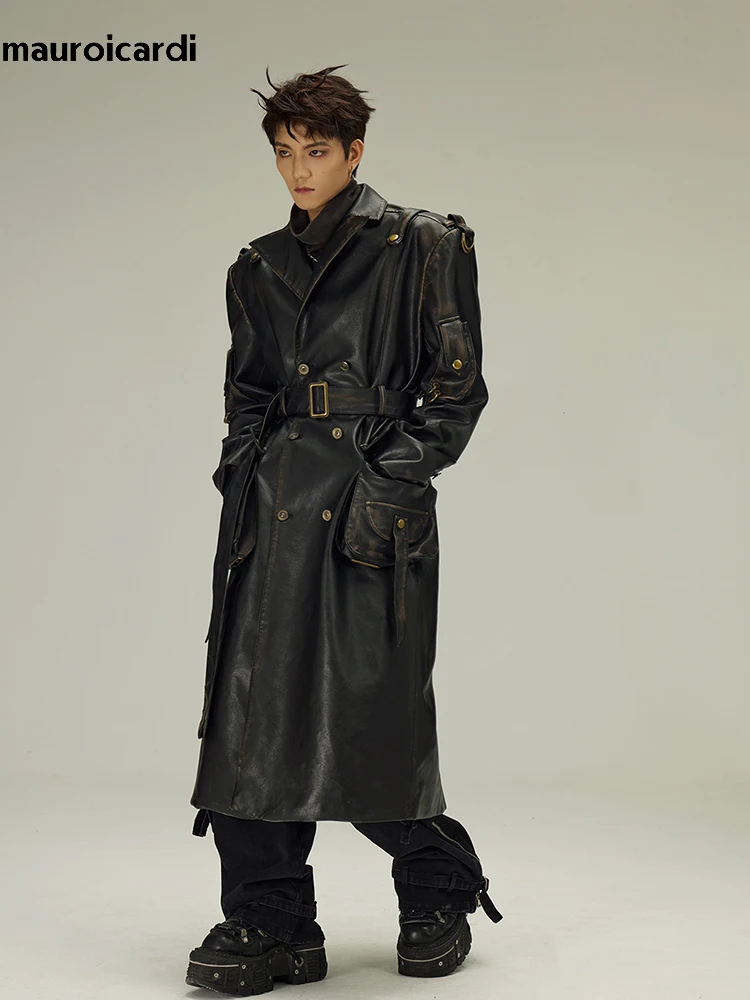
The complete formal outerwear presentation extends beyond the coat itself to include carefully selected accessories that enhance both functionality and elegance.
Formal Scarves
- White Silk: The most formal option, traditionally worn with white tie
- Black Silk: Classic choice for black tie events, offering subtle elegance
- Cashmere: Provides luxurious warmth in conservative colors (black, navy, gray)
- Styling: Formal scarves are worn inside the coat, never hanging outside
Formal Gloves
- White Kid or Cotton: Required for white tie, carried rather than worn indoors
- Black or Gray Leather: Appropriate for black tie and formal overcoat pairing
- Lining Considerations: Cashmere or silk linings offer warmth without bulk
- Fit Requirements: Should fit closely without restricting movement
Formal Hats
- Top Hat: Traditional companion to white tie and morning dress (now rare)
- Homburg: Classic formal hat option with bound brim and center dent
- Modern Approach: Contemporary formal events often forego hats entirely
Boutonnières and Pocket Squares
- White Pocket Square: Essential with formal outerwear, simply folded
- Boutonnière: If worn with dinner jacket, should be absent from overcoat
Mens Cashmere Overcoat, Mens Hooded Winter Coat, Mens Wool Blend Coat
Price range: $128.72 through $139.68 Select options This product has multiple variants. The options may be chosen on the product pageMens Black Overcoat, Mens Black Wool Coat, Mens Wool Overcoat
$339.18 Select options This product has multiple variants. The options may be chosen on the product pageMens Grey Overcoat, Mens Wool Blend Coat, Mens Wool Overcoat
$201.28 Select options This product has multiple variants. The options may be chosen on the product pageMens Herringbone Coat, Mens Long Overcoat, Mens Wool Overcoat
Price range: $197.16 through $203.69 Select options This product has multiple variants. The options may be chosen on the product pageMens Long Overcoat, Mens Topcoats
Price range: $189.40 through $196.88 Select options This product has multiple variants. The options may be chosen on the product pageMens Long Overcoat, Mens Tweed Coat
Price range: $397.49 through $409.96 Select options This product has multiple variants. The options may be chosen on the product page
Selecting the perfect coat proportions for your body type ensures these accessories complement rather than compete with your overall appearance. For instance, taller gentlemen can carry off longer scarves, while those with broader shoulders benefit from proportionally scaled accessories.
The coordinated integration of these elements demonstrates attention to detail that distinguishes truly refined formal presentation. Each accessory should serve both functional and aesthetic purposes, selected with the same care as the coat itself.
Investment & Acquisition: Buying vs. Renting Formal Coats
For many gentlemen, formal occasions raise practical questions about whether to invest in purchasing formal outerwear or simply rent as needed. This decision depends on several factors including frequency of use, budget considerations, and personal priorities.
Benefits of Owning Formal Outerwear
- Perfect fit achieved through proper tailoring to your specific proportions
- Higher quality materials and construction than typical rental options
- Immediate availability without fitting appointments or return deadlines
- Long-term cost efficiency for those attending multiple formal events yearly
- Personal satisfaction in owning a distinguished garment
When Renting Makes Sense
- One-time or extremely infrequent formal occasions
- Temporary size fluctuations making investment impractical
- Budget constraints that preclude quality purchases
- Storage limitations in your current living situation
- Uncertainty about proper style selection
When purchasing formal outerwear, quality indicators include:
– Hand-stitched details particularly around lapels and collar
– Full canvas construction rather than fused interlining
– Natural fiber composition (wool, cashmere) without synthetic additions
– Clean, consistent stitching with appropriate stitch count
– Proper pattern matching at seams
Metro Cloak’s collection of quality overcoats offers investment-worthy options combining traditional craftsmanship with contemporary refinement. When selecting formal outerwear as an investment, prioritize timeless styling over trend-driven details that may quickly appear dated.
For those building a formal wardrobe gradually, a classic black Chesterfield overcoat offers maximum versatility, appropriate for both black tie events and formal business occasions. This strategic first purchase provides foundation outerwear suitable for nearly any formal context.
The Spectrum of Formality: When Rules Can Bend
While formal outerwear traditions remain relatively stable, certain contexts allow thoughtful flexibility within established frameworks. Understanding where tradition is inviolable and where personal expression remains appropriate helps navigate the spectrum of formality with confidence.
Traditional formal rules remain most stringent in:
– Diplomatic functions and state occasions
– Events with royal or presidential attendance
– White-tie galas and balls
– Traditional society weddings
Contemporary interpretations find more acceptance in:
– Creative black tie events
– Modern cultural celebrations
– Industry-specific formal gatherings (film premieres, fashion events)
– Private formal celebrations
Regional variations also influence formal standards. British formal traditions typically maintain stricter adherence to historical precedent, while American interpretations often permit greater flexibility. Continental European traditions sometimes incorporate distinctive regional elements while maintaining formal structures.
Acceptable modernizations might include:
– Subtle texture variations in traditional colors
– Slightly more structured silhouettes in classic coat styles
– Contemporary closure systems that maintain formal appearance
– Performance fabric innovations that preserve formal aesthetics
The key to successful interpretation lies in understanding the rules before thoughtfully adapting them. Modifications should enhance rather than undermine the fundamental elegance formal outerwear seeks to achieve.
Care & Maintenance of Fine Formal Outerwear
Proper maintenance extends the life of formal outerwear while preserving its distinguished appearance through years of use. These care practices protect your investment while ensuring your coat remains ready for formal occasions.
Storage Protocols
- Use wide, shaped wooden hangers that support shoulders properly
- Allow adequate space between garments to prevent crushing
- Cover with breathable garment bags, never plastic
- Store in climate-controlled environments away from direct sunlight
- Use cedar elements nearby (not touching) to deter moths
Cleaning Considerations
- Limit dry cleaning to once per season to prevent chemical stress
- Spot clean minor issues with appropriate fabric solutions
- Brush wool and cashmere coats with proper garment brush after wearing
- Address stains immediately with professional guidance
- Always empty pockets before storage or cleaning
Maintenance Practices
- Allow 24-hour rest between wearings when possible
- Steam rather than iron to remove minor wrinkles
- Check and reinforce buttons before formal events
- Maintain proper hanging shape when not in use
- Address minor repairs immediately before they worsen
Professional servicing at season’s end prepares formal outerwear for storage and identifies any issues requiring attention. Many quality clothiers offer seasonal maintenance services specifically for formal garments, including inspection, minor repairs, careful cleaning, and proper preparation for storage.
The Modern Gentleman’s Guide to Formal Outerwear Etiquette
Navigating formal outerwear etiquette requires understanding both traditional practices and their practical application in contemporary settings. These guidelines help ensure your handling of formal coats enhances rather than detracts from your overall presentation.
Q: When should I remove my formal coat upon arrival?
A: Remove your coat immediately upon entering any indoor venue, preferably with coat check assistance. Never wear your overcoat into dining rooms or formal function spaces.
Q: How should I manage my coat when no coat check is available?
A: Fold it neatly inside-out (to protect the visible exterior) and drape it over your arm, or find an appropriate chair where it won’t intrude on others.
Q: Are there specific buttoning rules for formal overcoats?
A: Single-breasted formal coats should be fully buttoned when standing outdoors. For double-breasted styles, leave the bottom button unfastened following traditional tailoring etiquette.
Q: How should I handle rain or snow with formal outerwear?
A: Gently shake moisture from your coat before entering buildings, away from others. Never use mechanical dryers on fine formal coats.
Q: When retrieving my coat for departure, should I tip the coat check attendant?
A: Yes, this service typically warrants a modest gratuity ($2-5) as a courtesy for proper handling and care of your garment.
Q: Is it appropriate to wear a scarf with formal outerwear?
A: Yes, but formal scarves should be worn inside the coat rather than draped outside, and removed along with the coat upon arrival.
Proper etiquette extends to how you physically handle your coat. Avoid tugging, yanking, or wadding formal outerwear, actions that damage the garment while suggesting unfamiliarity with formal contexts. The elegance of formal occasions begins and ends with your mindful handling of your distinguished outerwear.
Frequently Asked Questions About Men’s Formal Outerwear
Q: Can I wear a regular suit jacket or blazer to a black tie event?
A: No. Dinner jackets (tuxedos) differ fundamentally from suit jackets in material, styling, and details. Regular business attire never substitutes appropriately for formal wear.
Q: What’s the difference between an overcoat and a topcoat?
A: The primary difference is weight and sometimes length. Topcoats feature lighter fabrics (13-16 oz) suitable for milder weather, while overcoats use heavier materials (18-24 oz) designed for winter conditions.
Q: When is it appropriate to wear a velvet dinner jacket?
A: Velvet dinner jackets are typically reserved for winter formal events, particularly around the holiday season. They should be dark colored (black, midnight blue, or deep burgundy) and paired with traditional formal trousers.
Q: Do formal coats need to match my dinner jacket exactly?
A: No. Formal coats should complement rather than match your formal wear. A black overcoat remains appropriate with either a black or midnight blue dinner jacket.
Q: Is it ever acceptable to go without formal outerwear in cold weather?
A: No. Beyond practical concerns about comfort, arriving without appropriate outerwear suggests incomplete formal preparation. Even for short distances, proper formal outerwear remains essential.
Q: How much should I expect to invest in quality formal outerwear?
A: Quality formal overcoats typically begin around $500 for entry-level options, with premium selections ranging from $1,000-3,000 depending on materials, construction, and brand heritage.
Q: Can I wear a patterned overcoat to formal events?
A: Subtle patterns like herringbone in appropriate dark colors may be acceptable for less formal events, but solid fabrics remain the safest and most traditional choice for truly formal occasions.

